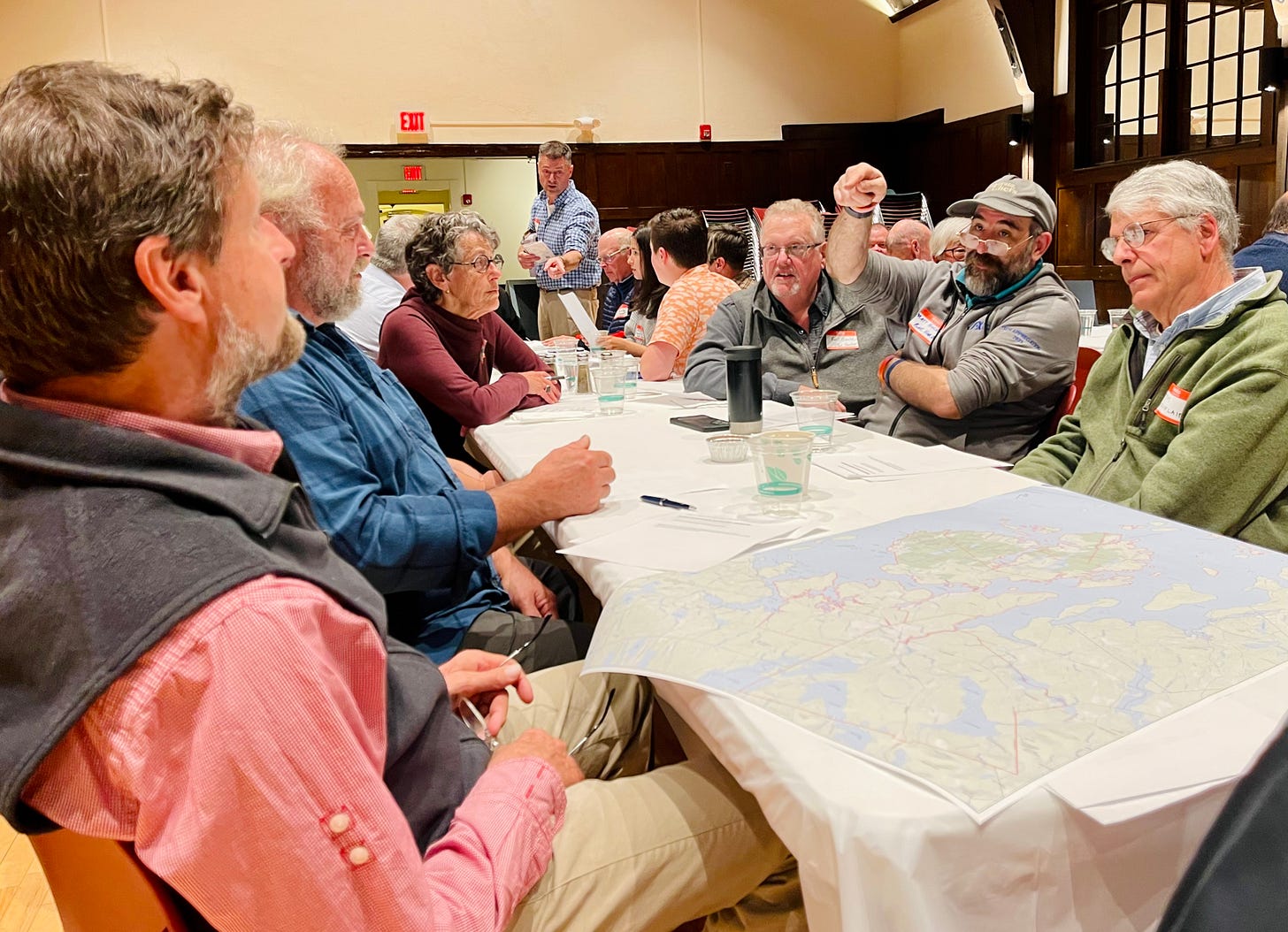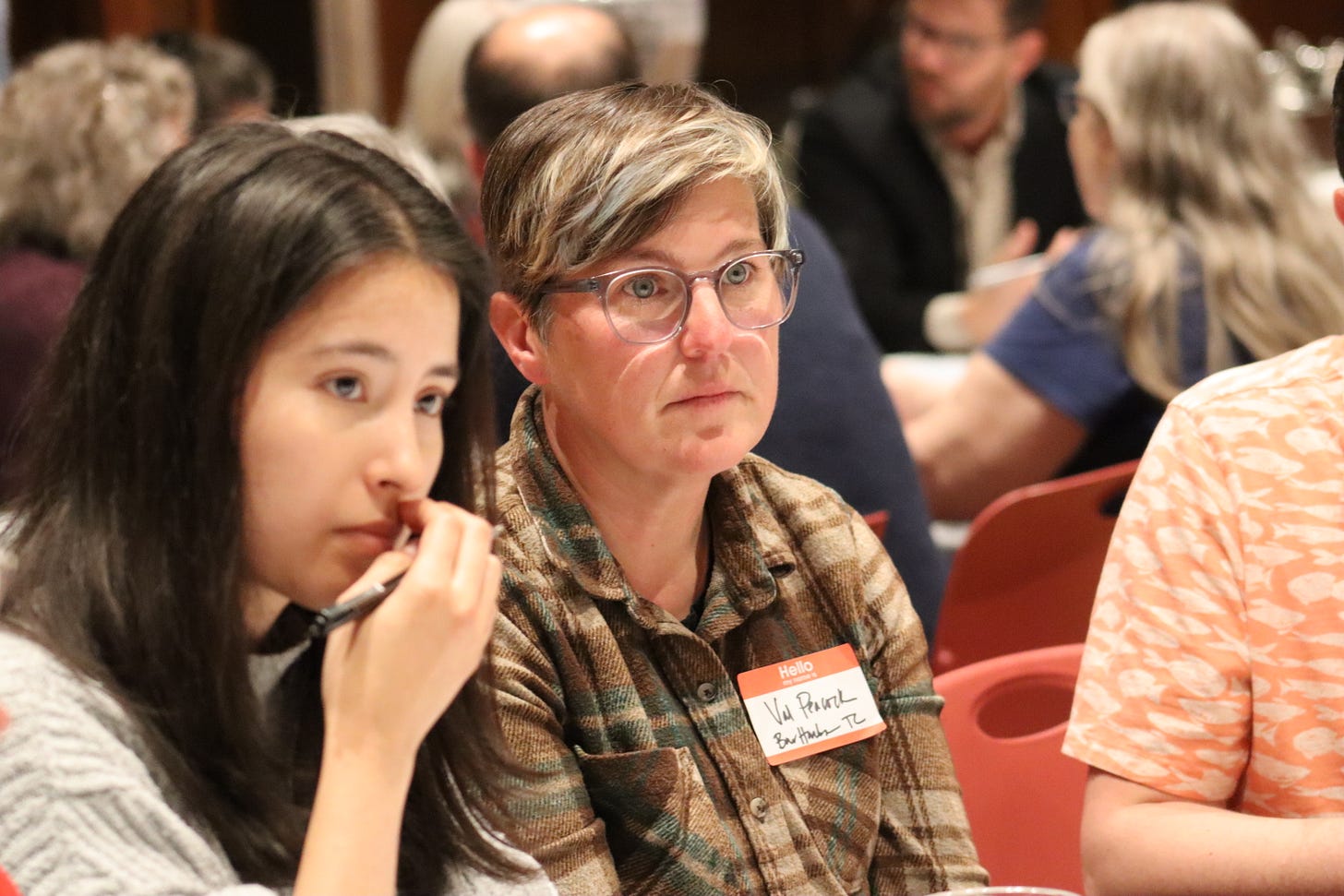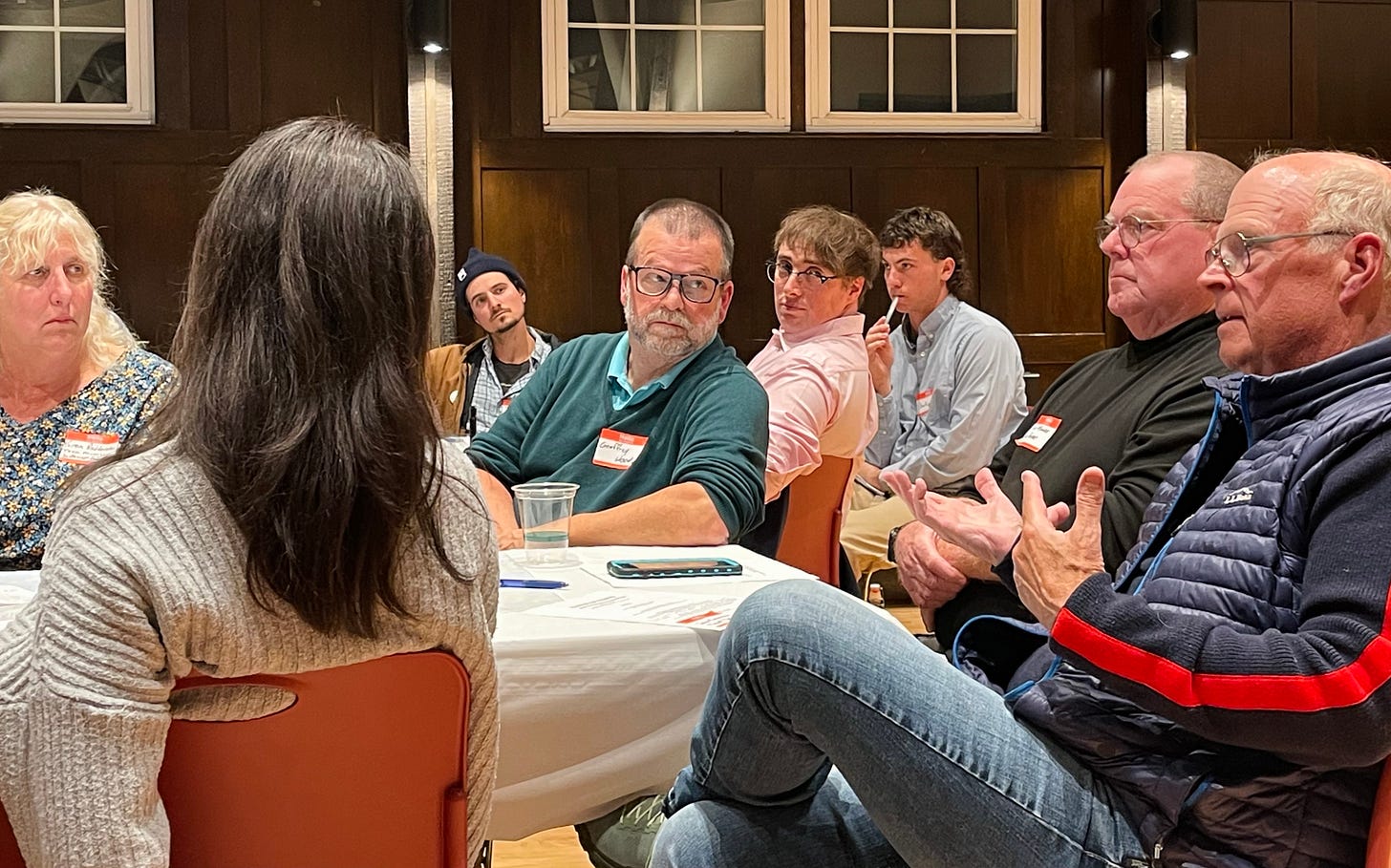The Bar Harbor Story is generously sponsored by YES ON 4 For a Balanced Solution.
MOUNT DESERT ISLAND—John Bennett, Trenton Selectman and real estate agent, sat at one of three tables full of town officials from across his own town, Ellsworth, and Mount Desert Island and explained something that would be hard to change.
“They sell a home for $1.5 million, come to Bar Harbor and see a house for $700,000 and that’s a deal. That’s what pushed this out of control,” he said.
Though many local people feel like a $700,000 house on Mount Desert Island is excessively high, people from other states, wealthier states, urban areas, think it’s a bargain.
There’s no sticker shock for them when they look to buy a house in the region. Instead, he said, they realize that they’re getting a great deal.
That wasn’t necessarily very good news for the attendees at the League of Towns meeting last Thursday as they discussed housing and transportation issues in the region. For housing, they discussed a lack of availability of affordable homes. For transportation, discussion was mostly focused on congestion issues and lack of safe main roads for bicyclists and pedestrians.
The League of Towns is a collaboration of staff and officials from Bar Harbor, Cranberry Isles, Ellsworth, Lamoine, Mount Desert, Southwest Harbor, Swans Island, Tremont, Trenton and Acadia National Park.
Mount Desert Selectboard member Rick Mooers was focused on what the towns could do about housing issues.
“We’re headed toward being an island of old people,” Mooers said, because younger people and workers can’t afford to be here. He suggested using the Island Housing Trust as a potential footprint to build on or reflect and have towns donate to build one new house a year. The towns, he suggested, could become co-signers or the loan’s guarantor.
There are multiple aspects and players that aren’t always in the discussion when it comes to housing. Bar Harbor Town Councilor Matthew Hochman mentioned that salaries haven’t kept pace with housing costs and other costs of living. Southwest Harbor Selectman Jim Vallette mentioned the entry of venture capitalists buying housing stock, and also wanted to stress that he’d like to focus on people living in dilapidated housing stock.
Bar Harbor Town Councilor Maya Caines also mentioned that there is a “huge lack of year-round rentals on this island so people are constantly displaced on a six-month basis.”
Lincoln Millstein of the Quietside Journal spoke about the missing middle and lack of homes for those of lower-middle-class incomes. Millstein also suggested the League of Towns get together and fund a position whose sole focus would be to investigate grants.
Noel Musson of the Musson Group facilitated the discussion with Susanne Paul. The group has also spearheaded the MDI Housing Summit. The region, he says, isn’t used to being proactive “and this challenge demands a proactive approach. So you’re going to have to get out of your comfort zone.”
He suggested focusing on three aspects: engagement and working toward common understanding toward what you are doing about homes; how to make it easier for people to build homes (which might require tweaking some ordinances that are old and processes that are inefficient); and finding better ways to finance homes.
Bar Harbor Town Council Vice Chair Gary Friedmann said he’d like all the towns to get behind the local options lodging tax. Maine has the highest property tax burden of any state in the nation, he said. A 2% lodging tax, an initiative that has failed for many decades in Augusta, would bring in money to every town. He suggested looking at the lodging tax as a way to give property owners tax relief and also a way to build up town’s war chests to work on housing initiatives.
Mooers said that they all need to think more along the lines of what the municipalities can do.
“We’re all going to be turning to dust before we solve it if we don’t do something soon,” he said.
COMING BACK AND LOOKING FOR HOMES
A potential first-time homeowner in Bar Harbor, who grew up here and is employed locally and returned after graduate school, couldn’t get a bank loan for a refurbished mobile home on a foundation despite it being in top condition.
“They said they wouldn’t even consider it,” she told the Bar Harbor Story.
There is a group conspicuously missing in the conversation, Mooers said, lending institutions.
When looking at another home that had been an AirBnB in Tremont, there had been three competing offers, one above list price. She asked if she could write a letter saying that she was local, that she wanted to volunteer for the ambulance service and fire department. That is frowned open, her realtor said.
Of the 72 potential homes on Mount Desert Island listed on RedFin only four are under $400,000.
The median household income (in 2020 dollars) for Hancock County, Maine from 2016-2020 was $58,345. There are approximately 56,192 people in the county and almost 90% have lived in the same house for more than a year.
STARTER HOMES AND THE FACTORS KEEPING MDI FROM THEM
A myriad of local and national circumstances and past decisions have created an increasingly complex housing situation on Mount Desert Island that has led to few to no starter homes currently available in the area.
Starter homes, which are usually less expensive and smaller than a majority of homes in an area, are a person’s first purchased home. Typically, these homes help people build equity so that they can move to bigger houses. Freddie Mac defines these dwellings as homes with 1,400 square feet or less.
According to an article by Freddie Mac, “The Bureau of the Census reports that in 1980, 40% of homes constructed were entry-level homes. In 2019, only 7% of homes constructed were entry-level homes.”
“Affordable houses don’t exist anymore” when it comes to building starter homes said Linda Farnsworth Higgins who has been a realtor and broker at LS Robinson since 1987. Higgins said one reason is the cost to buy land and then to bring in septic, utilities, and putting in a well. Even a home without upgrades like granite countertops are coming in around $350,000 or $400,000 to build, she said. With currently increasing interest rates, that’s putting those homes just out of reach for a lot of buyers.
Builders aren’t incentivized to construct those starter homes because for the same amount of labor, a builder can create an above-grade dwelling with those fancier amenities and be able to pay his employees more or offer them health insurance. Similarly, a subcontractor can make more money than being a laborer for a builder and that adds to the cost to the builder, often making construction companies hustle to get enough employees to build houses. An employee wants to be paid competitively, and employers also have to pay for unemployment and Social Security, which increases the bottom line for construction companies.
Bar Harbor Town Council Chair Valerie Peacock said that thinking about including lenders and builders is important, as is including them in the conversation.
There’s plenty of rich people who want to build beautifully constructed houses, she said. And the financial incentive for builders like her husband, is to build those homes so that they can pay their employees. The island doesn’t have people thinking about housing developments, she said. The island, she said, has to learn how to do that and what it might look like.
“It’s not an easy thing to do,” she said.
On September 25, the New York Times’ Emily Badger wrote a feature “Whatever Happened to the Starter Home?” where she said,
“The disappearance of such affordable homes is central to the American housing crisis. The nation has a deepening shortage of housing. But, more specifically, there isn’t enough of this housing: small, no-frills homes that would give a family new to the country or a young couple with student debt a foothold to build equity.”
Badger writes that multiple factors have created this housing shortage. Land costs more. Like Higgins said, the cost to build houses is more expensive because of building materials and labor costs. There are a lot more regulations and fees from governments.
As land and lots became more expensive, she writes, instead of decreasing required lot sizes to build on, towns and cities increased the minimum lot size. They also often created stricter rules about setbacks and design. And those changes often stem from towns and cities trying to make their best communities, Badger says.
Konrad Putzier writes, “The United States, a country of wide open spaces, is short on land.”
That’s also especially true for Bar Harbor and Mount Desert Island where Acadia National Park takes up 10,156 acres of Bar Harbor and 30,500 acres of the island. real estate associate broker Erica Brooks told the Bar Harbor Story in 2022, saying, “Overall on MDI we have to think about simple supply and demand. Two-thirds of the island is made up of national park, nature conservations, or undevelopable land (wetlands, etc.). This makes for a smaller supply overall so with less supply the prices are higher. The demand for on island housing has increased even more over the years in conjunction with a booming economy, good press for ANP and Bar Harbor and of course Covid pushed things over the edge with demand too.”
Photos: Carrie Jones/Shaun Farrar/Bar Harbor Story
LINKS TO LEARN MORE
To read the report in full, go here. Also in the packet is the plan’s “Phase 1: Community Engagement Report,” which we’ll have an article on shortly.
Interview at the WSJ about a Cincinati housing program which has a bit of a different problem.
If you’d like to donate to help support us without being a paid subscriber, you can, but no pressure! Just click here.
If you’d like to sponsor the Bar Harbor Story, you can! Learn more here.





















